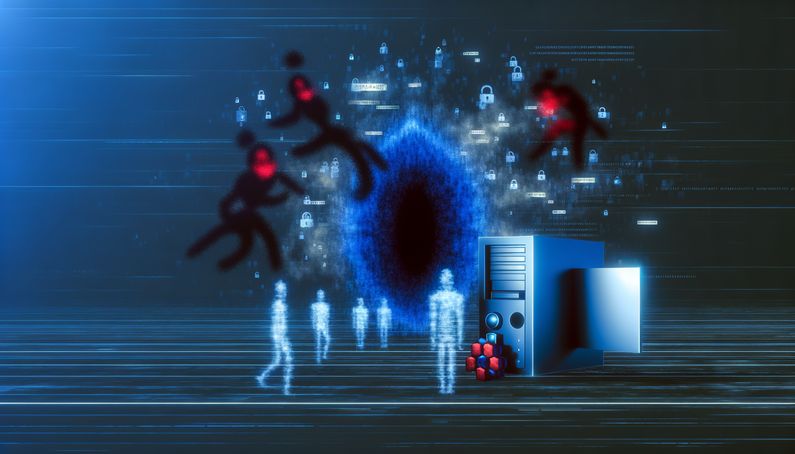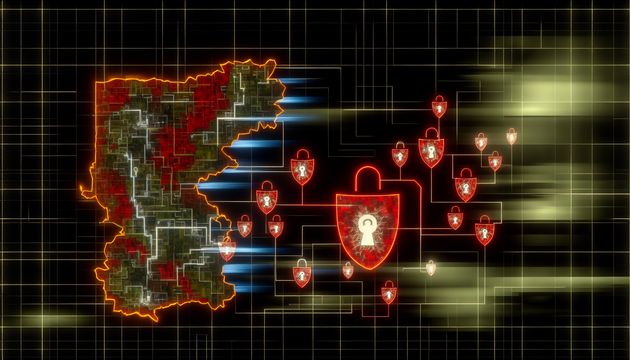
Understanding the Play Ransomware Threat: Exploiting Zero-Day Vulnerabilities
The Play ransomware gang has emerged as a significant threat actor, exploiting a zero-day vulnerability in the Windows Common Log File System (CLFS), identified as CVE-2025-29824. This flaw allows attackers to gain SYSTEM privileges, facilitating a range of malicious activities. Think of a zero-day vulnerability as a hidden door in a building that no one knows about until a burglar finds it and sneaks in. The vulnerability was patched by Microsoft in April 2025, but not before it was used in targeted attacks across various sectors, including IT, real estate, and finance, affecting countries like the United States and Spain (Microsoft Security Blog). The Play ransomware gang’s sophisticated attack methods, including the use of custom tools like the Grixba infostealer, highlight the evolving threat landscape and the need for robust cybersecurity measures.
Exploitation by Play Ransomware Gang
Zero-Day Vulnerability Exploitation
The Play ransomware gang has been actively exploiting a zero-day vulnerability in the Windows Common Log File System (CLFS), identified as CVE-2025-29824. This vulnerability allows attackers to gain SYSTEM privileges on compromised systems. Imagine it as a master key that lets intruders access any room in a building. The exploitation of this flaw involves a memory corruption technique and the use of the RtlSetAllBits API to overwrite the exploit process’s token, granting it all privileges. This method enables the attackers to inject processes into SYSTEM processes, facilitating further malicious activities.
The vulnerability was patched by Microsoft in April 2025, but it had already been exploited in a limited number of attacks before the patch was released. The targets of these attacks included organizations in various sectors, such as information technology, real estate, financial, and retail, across different countries including the United States, Venezuela, Spain, and Saudi Arabia (Microsoft Security Blog).
Attack Methodology and Tools
The Play ransomware gang employs a sophisticated attack methodology that includes the use of custom tools and dual extortion techniques. One of the tools used by the group is the Grixba infostealer, which is a custom network-scanning and information-stealing tool. This tool is typically used to enumerate users and computers in compromised networks (Symantec’s Threat Hunter Team).
In addition to Grixba, the group uses a payload injection technique where a malicious payload is injected into the winlogon.exe process. Think of this as slipping a rogue agent into a secure meeting. This payload then injects the Sysinternals procdump.exe tool into another process, allowing the attackers to dump the memory of LSASS and obtain user credentials. This credential theft is a critical step in the attack chain, enabling the attackers to move laterally within the network and escalate privileges (Microsoft Security Blog).
Impact on Victims
The impact of the Play ransomware attacks has been significant, affecting a wide range of organizations and sectors globally. As of October 2023, the group had breached the networks of around 300 organizations worldwide. Notable victims include cloud computing company Rackspace, car retailer giant Arnold Clark, the City of Oakland in California, Dallas County, the Belgian city of Antwerp, American semiconductor supplier Microchip Technology, and doughnut chain Krispy Kreme (Bleeping Computer).
The Play ransomware gang is known for its double extortion tactics, where they not only encrypt the victim’s data but also threaten to leak it online if the ransom is not paid. This approach increases the pressure on victims to comply with the ransom demands, as the potential reputational damage from a data leak can be severe.
Global Reach and Threat Landscape
The Play ransomware group has established itself as a formidable threat actor on the global stage. Since its emergence in June 2022, the group has targeted over 787 victims across North America, South America, Europe, and Australia. Their attacks have impacted sectors such as telecommunications, healthcare, media, transportation, construction, and government (Ransomware.live).
The group’s ability to exploit zero-day vulnerabilities and their use of advanced attack techniques highlight the evolving threat landscape of ransomware. Organizations must remain vigilant and implement robust security measures to protect against such sophisticated attacks. This includes regular patching of vulnerabilities, network segmentation, and the use of advanced threat detection and response solutions.
Mitigation and Defense Strategies
To defend against the Play ransomware gang and similar threats, organizations should adopt a multi-layered security approach. This includes:
-
Regular Patch Management: Ensuring that all systems and applications are up-to-date with the latest security patches is crucial in mitigating the risk of exploitation of known vulnerabilities like CVE-2025-29824.
-
Network Segmentation: Implementing network segmentation can limit the lateral movement of attackers within the network, reducing the potential impact of a breach.
-
Advanced Threat Detection: Deploying advanced threat detection and response solutions can help identify and respond to suspicious activities in real-time, minimizing the window of opportunity for attackers.
-
Employee Training: Educating employees about phishing attacks and other common attack vectors can reduce the likelihood of initial compromise.
-
Incident Response Planning: Having a well-defined incident response plan in place can ensure a swift and effective response to a ransomware attack, minimizing downtime and data loss.
By implementing these strategies, organizations can enhance their resilience against ransomware attacks and protect their critical assets from the growing threat posed by groups like the Play ransomware gang.
Final Thoughts
The Play ransomware gang’s exploitation of the Windows logging flaw underscores the critical importance of timely patch management and advanced threat detection. Their global reach and sophisticated techniques, such as dual extortion and payload injection, have impacted numerous organizations worldwide, from cloud computing firms to city governments (Bleeping Computer). As ransomware tactics evolve, organizations must adopt a multi-layered security approach, including regular updates, network segmentation, and employee training, to mitigate risks and protect their assets (Microsoft Security Blog).
References
- Bleeping Computer. (2025). Play ransomware exploited Windows logging flaw in zero-day attacks. https://www.bleepingcomputer.com/news/security/play-ransomware-exploited-windows-logging-flaw-in-zero-day-attacks/
- Microsoft Security Blog. (2025). Exploitation of CLFS zero-day leads to ransomware activity. https://www.microsoft.com/en-us/security/blog/2025/04/08/exploitation-of-clfs-zero-day-leads-to-ransomware-activity/
- Ransomware.live. (2025). Play ransomware group. https://www.ransomware.live/group/play



